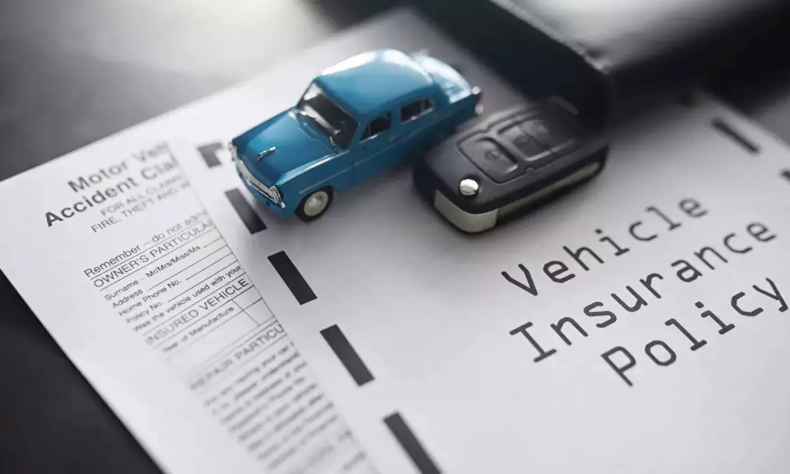
When it comes to protecting your vehicle, a vehicle insurance policy plays a vital role. With rising vehicular ownership and an increase in road accidents, having comprehensive insurance coverage is essential. But with so many insurance providers offering different policies, it’s crucial to understand the key features that make a policy worth your investment. The right insurance policy ensures both financial protection and peace of mind.
Let’s take a closer look at the important features to consider when selecting the best vehicle insurance policy for your needs.
1. Type of Coverage
One of the first things to evaluate is the type of coverage provided by the vehicle insurance policy. In general, insurance policies offer two types of coverage: third-party liability and comprehensive coverage.
- Third-party liability insurance: This is mandatory in most countries, including India. It covers damages or injuries you cause to another person or their property in an accident. However, it does not cover any damage to your own vehicle.
- Comprehensive insurance: This offers broader coverage and protects you from third-party liabilities as well as damages to your own vehicle due to accidents, natural disasters, theft, fire, or vandalism. Opting for comprehensive coverage might cost more, but it provides peace of mind by covering more scenarios.
Choosing between these two types depends on your budget and the extent of protection you desire. If your car is relatively new or valuable, it’s advisable to opt for comprehensive insurance.
2. Add-on Covers
While a basic insurance policy offers fundamental protection, many insurance companies provide a range of add-ons that enhance the scope of coverage. These optional covers can be tailored to your specific needs, making the vehicle insurance policy more robust. Some of the most common add-ons include:
- Zero Depreciation Cover: This add-on ensures that you are reimbursed the full cost of replacing damaged parts without factoring in depreciation. It’s particularly beneficial for newer cars.
- Roadside Assistance: Offers help in case your vehicle breaks down or encounters mechanical issues while on the road.
- Engine Protection Cover: This is ideal for vehicles in flood-prone areas. It protects against damage to the engine due to waterlogging or other factors.
- No-Claim Bonus (NCB) Protection: NCB is a discount you receive on your premium for each claim-free year. This add-on protects your NCB even if you make a claim.
- Personal Accident Cover: This provides coverage for injuries to the driver or passengers, offering financial support in case of death or disability.
When choosing a motor vehicle insurance policy, it’s important to consider which add-ons you might require based on your driving habits, vehicle usage, and location.
3. Policy Premium
The premium is the amount you pay regularly to maintain your vehicle insurance policy. It’s important to compare premiums from different providers, but cheaper isn’t always better. Several factors influence the premium, including:
- Vehicle type: The make, model, and age of your car significantly impact the premium. High-end or luxury cars generally attract higher premiums due to the cost of repairs.
- Driver’s profile: Insurers consider factors like the driver’s age, driving experience, and accident history when calculating the premium.
- Geographical location: Vehicles in metropolitan areas or high-risk zones may have higher premiums due to the increased likelihood of theft or accidents.
- Add-ons: As mentioned earlier, opting for additional coverage increases your premium but offers enhanced protection.
Make sure you balance the premium with the level of coverage you’re receiving. You might pay a little more for a comprehensive policy, but it’s worth the cost for the protection it provides.
4. Insurer’s Claim Process and Settlement Ratio
When purchasing a vehicle insurance policy, it’s crucial to understand how easy and efficient the claim process is. In times of need, you want an insurer that processes claims quickly without too much hassle. Look for companies that offer:
- Cashless Claim Facility: Many insurers have a network of garages where you can get your vehicle repaired without paying upfront. The insurer directly settles the bill with the garage.
- Ease of Filing Claims: Check if the insurer has user-friendly, digital processes for filing claims. Many top companies now offer mobile apps that allow you to file claims online and track the status in real time.
Another important factor is the Claim Settlement Ratio (CSR), which indicates the percentage of claims an insurer settles compared to the number of claims received. A higher CSR suggests that the insurer is reliable and likely to settle legitimate claims without unnecessary delays or disputes.
5. Deductibles
A deductible is the amount you agree to pay out of your pocket before the insurance kicks in. Policies generally have two types of deductibles:
- Compulsory Deductibles: This is a fixed amount decided by the insurance company that you must pay when making a claim.
- Voluntary Deductibles: This is an amount you agree to pay over and above the compulsory deductible to reduce the premium.
While opting for a higher voluntary deductible can lower your premium, it also means you’ll have to pay more during claims. Make sure to balance the deductible amount with your financial capacity and driving history.
6. No-Claim Bonus (NCB)
NCB is a reward for safe driving. For each claim-free year, you earn a discount on the renewal premium of your vehicle insurance policy. This discount can go up to 50% after five consecutive claim-free years. It’s an excellent way to save on premiums while encouraging safe driving habits. Some insurers also allow you to transfer your NCB if you switch providers.
Make sure to choose a policy that offers a good NCB benefit. Additionally, consider purchasing NCB Protection as an add-on, which ensures you don’t lose this benefit even if you make a minor claim.
7. Network of Garages
Insurers often partner with a network of garages where policyholders can avail themselves of cashless repairs. When selecting a motor vehicle insurance policy, it’s crucial to check if your insurer has a wide network of authorized garages, especially in your area. The availability of such garages ensures you don’t have to worry about out-of-pocket expenses at the time of repair.
8. Exclusions
Every vehicle insurance policy has certain exclusions, i.e., situations or damages not covered by the policy. Common exclusions include:
- Wear and tear of the vehicle.
- Damage caused while driving under the influence of alcohol or drugs.
- Damage due to illegal activities.
- Damage due to war or nuclear risks.
Understanding these exclusions helps prevent unpleasant surprises during the claim process.
Conclusion
Choosing the right vehicle insurance policy requires careful consideration of multiple factors. From the type of coverage and add-ons to the insurer’s claim settlement ratio, understanding these key features can help you make an informed decision. It’s essential to select a policy that not only fits your budget but also provides comprehensive coverage to safeguard your vehicle against unforeseen circumstances. Evaluate different insurers, compare premiums, and understand the exclusions to ensure that your policy offers optimal protection. For more detailed information about motor vehicle insurance policy, you can explore relevant options online.
By considering all these features, you can be confident in choosing the right insurance that protects both your vehicle and your finances effectively.
In fact, having the right insurance policy for your vehicle is one of the important factors of protection in the vehicle. With the increase in vehicular ownership and road accidents on the rise, you should be well covered. On the other hand, with many insurance providers offering different policies, it makes sense to know the key features that make a policy worth investing in. Getting the right insurance policy gives you financial protection and peace of mind. Let’s get into details of the important features that need to be considered when choosing the best vehicle insurance policy for your needs.
1. Type of Coverage
The first and most essential thing that needs to be evaluated is the type of coverage provided by the vehicle insurance policy. General, vehicle insurance policies usually come with two types of coverage: third-party liability as well as comprehensive coverage.
Third-party Liability: This is a statutory cover in most countries, including India. Third-party liability covers any damage or injury you might cause to another person or his property while driving. It will not cover any damage that would have been caused to your vehicle.
Comprehensive cover: It covers your vehicle against third-party liabilities along with damages to your own vehicle due to accidents, natural disasters, theft, fire, or vandalism. This is usually expensive than liability covers, but it gives one more security and makes one feel safe as it covers more things.
There are two types of car insurance, and you have to choose between them depending upon your pocket size and how much you want to protect. If the car is relatively new or valued, you should opt for comprehensive insurance.
2. Add-on Covers
A standard insurance policy only offers very basic cover, but most insurance companies provide a range of add-ons that extend the scope of protection. This means that by choosing one or more, an optional cover can be created to fit your needs, thus making the vehicle insurance much stronger. The most common of these add-ons are:
Zero Depreciation Cover: It will provide you with the complete amount of what you have to pay to change those body parts, not considering depreciation. It is very useful for new vehicles.
Roadside Assistance: It will support you if any accident happens or a technical issue comes when your vehicle is running on the road.
Engine Protection Cover: It is very useful where in the area you live is prone to waterlogging. It will surely protect the engine when it gets waterlogged or due to such reasons.
No Claim Bonus Protection: NCB is the discount or rebate in respect of premium provided at no claim for every completed year. This rider actually protects your NCB in case you make a claim.
Personal Accident Cover: It safeguards injuries to the driver as well as passengers, providing financial assistance in case of accidental death or disability.
When you settle on a motor vehicle insurance cover, it is also imperative to consider which add-ons you may need based on your driving patterns, vehicle usage, and location.
3. Policy Premium
Premium is what one pays periodically to sustain his or her automobile insurance cover. However, the premiums are best compared and not necessarily cheaper as might appear; some of what determines your premium include:
Vehicle type: The premium is greatly impacted by the make, model, and age of the car. Cars of high-end or luxury classes attract more premiums since their repair costs are quite on the higher side.
Driver’s profile: It varies with factors such as the age, experience in driving, and past history of accidents made by the particular driver.
Geographical location: A car located in the city or a high-risk zone has more premiums because of the likelihood of theft or accidents occurring there.
Add-ons: Also, as stated earlier, if you prefer additional coverage, you have to pay more for your premium but get better protection.
Ensure that you’re not overpaying and that the coverage that you are getting would be enough for what you have to pay for it. Of course, you have to pay a bit more for a comprehensive one, but for sure, it would be worth it because of the protection that it will give.
4. Insurer’s Claim Process and Settlement Ratio
Ease and efficiency in the claim process while purchasing a vehicle insurance policy is very important. While claiming, you require an insurer who treats claims promptly without much hassles involved. Look for companies that provide:
Cashless Claim Facility: Almost all the insurers have a network of garages where your vehicle can get repaired free of cost. The bill is settled directly with the garage by the insurer.
Claim Filing Ease: Check if the insurance company has simple, online claim filing mechanisms in place. Most leading companies these days have developed mobile apps that let you file claims online and then track status in real time.
Still another measure is the Claim Settlement Ratio, which is the ratio of claims settled by an insurer to those it has received. The more the claim settlement ratio, the more one can rely on the settlement of valid claims less procrastination and unnecessary altercation.
5. Deductibles
A deductible is a fee you would pay out of pocket before the insurance kicks in. Policies generally do have two kinds of deductibles:
*Compulsory Deductibles: This is a mandatory amount set by the insurance company, that is paid when the claimant is filing for a claim.
*Voluntary Deductibles: This is an amount that you agreed to pay over the compulsory amount to lessen your premium.
While upping your voluntary deductible may save you some of your hard-earned cash on premiums, it also means you’ll pay more when you do have claims. Balance your deductible in relationship with your own financial ability and driving record.
6. No-Claim Bonus (NCB)
NCB is the no-claim bonus for safe driving. For every claim-free year, the discount earned on your renewal premium increases. It can go up to 50 percent after five consecutive years of being claim-free. This is an impressive way of saving some premium while promoting safe driving habits. Some providers even allow you to transfer your NCB if you switch providers.
Make sure that you opt for a policy with good NCB benefit. You should also opt for NCB Protection as an add-on; that way, in case you make a minor claim, it will not be taken away from you.
7. Network of Garages
Very often, insurers partner with a network of garages wherein the policyholder can seek cashless repair. While choosing a motor vehicle insurance policy, pay attention to whether your insurer has an abundant number of authorized garages in your region. This will ensure that you do not have to worry about cash outlays at the time of repair.
8. Exclusions
Every policy issued for vehicle insurance contains certain exclusions, i.e., situations or damages not covered by the policy. Some of the common exclusions are as follows
Wear and tear of the vehicle.
Damage caused while driving under the influence of alcohol or drugs.
Damage due to illegal activities.
Damage due to war or nuclear risks.
All these exclusion help in order to avoid an unpleasant surprise at the time of claims.
Conclusion
Choosing the right vehicle insurance policy requires careful consideration of multiple factors. Be it the kind of coverage or add-ons, or the claim settlement ratio by the insurer, finding all these key features will help you in reaching an informed decision. It is thus important to choose a policy that would suit your pocket while giving a totally integrated form of protection to your vehicle against any untoward situation. Compare various insurers, compare the premiums, and know what is excluded, so that your policy can give you the optimal amount of protection. Read more on the internet for further information about the insurance policy on motor vehicles.
All these features will make you sure to make the right selection and opt for the proper kind of insurance that takes care both of your car and money.






